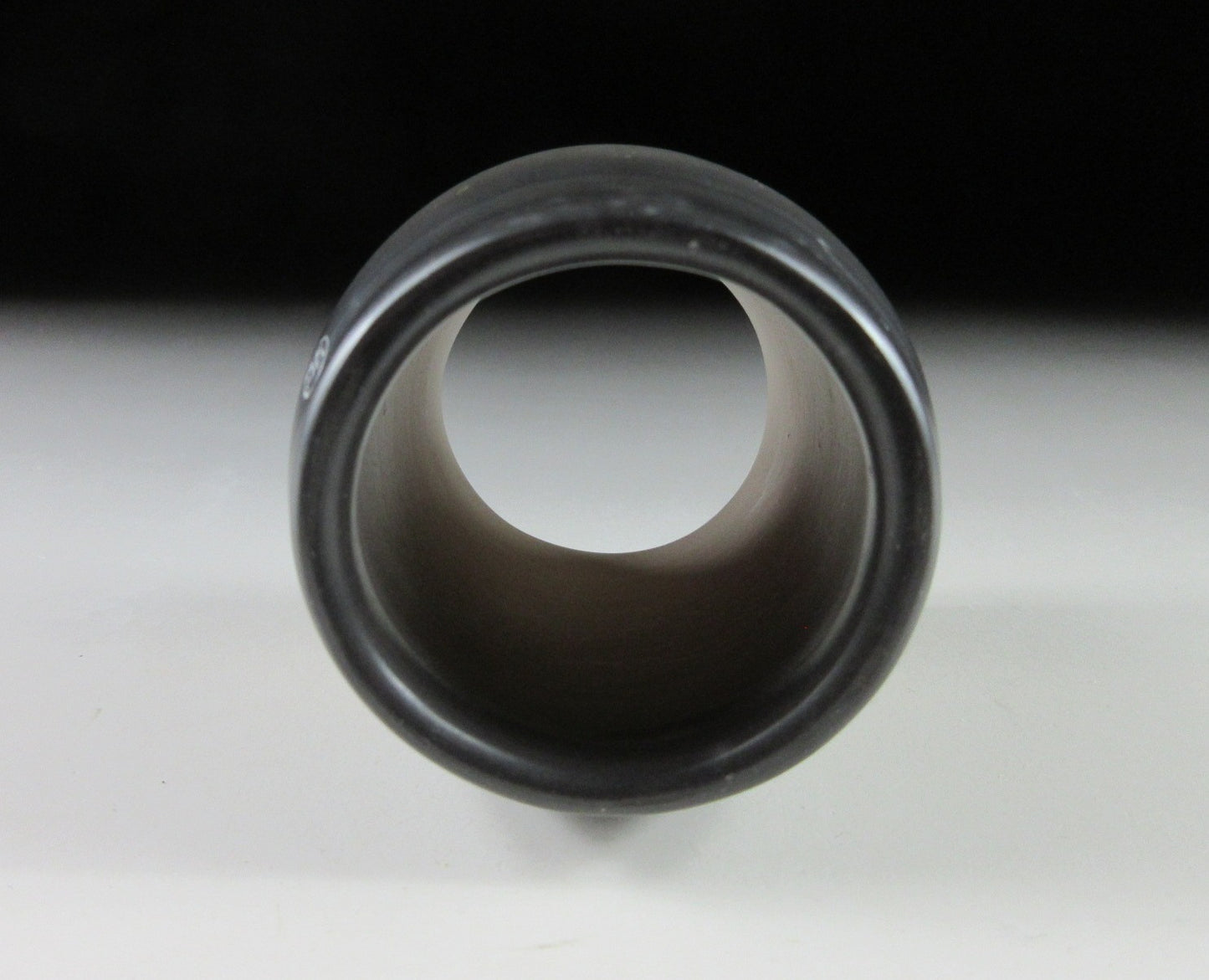Kominka Zakka
Ito Masataka Kamachi-ware Kogo Futaoki Set
Ito Masataka Kamachi-ware Kogo Futaoki Set
Couldn't load pickup availability
*SHIPPING OPTIONS VARY DEPENDING ON THE DESTINATION, PLEASE SCROLL TO THE END OF THIS LISTING FOR MORE DETAILS.
This listing is for a Kamachi-ware kogo and futaoki made around 20 years ago by Ito Masataka. They are made of low-fired earthenware and both pieces feature black markings that occurred during the firing process. Kogo are for holding incense during the tea ceremony. Kogo vary depending on the season. In summer wooden kogo are used for holding chips of incense wood, and in winter ceramic kogo are used for holding kneaded incense intended for the hearth. A futaoki functions as a lid rest during the tea ceremony. The lid of the kama is placed on the futaoki when hot water needs to be drawn from the kettle. The bamboo water ladle rests there up until the lid of the kama is removed. The stamp of the potter can be found on the bottom of each piece, and they come with their original signed wooden storage box.
Kamachi-ware refers to pottery produced in Fukuoka Prefecture. The history of Kamachi-ware can be traced back to 1604 when Hikosaburo Masachika, the head of the family who served Lord Nabeshima Naoshige of Hizen, made earthenware in what is now Nishikamachi, Yanagawa City. Masachika was born into a family of earthenware craftspeople, and was praised by Toyotomi Hideyoshi for his craftsmanship. At that time, it was prohibited to sell Kamachi pottery to the general public as it was a feudal clan's designated kiln. Kamachi pottery uses a technique that creates unique patterns and burnt spots during the firing process. Kamachi pieces are not glazed but appear glossy after being carbonised, thus resulting in a smooth and unique texture. When raw, wares are polished with camellia leaves and fired in a 900 degree kiln with pine wood. Roof tiles are placed on top of the kiln, and after firing, the open areas are sealed with clay. Through incomplete combustion without air, earthenware with rich colours can be made. There are three main colours: black, red and white. Some wares have black or white markings called 'unge', the difference in colour depending on the firing method and soil. Kamachi potters mainly produce utensils used in the tea room, such as furo and ashware. Earthenware furo potters in Kyoto and Nara also make this kind of pottery, however it’s usually referred to as Unge-ware. Katsura Gama is one such kiln that specialises in unglazed Unge-ware pieces. **Fellow sellers, this information was researched by Kominka Zakka and CANNOT be used in your own listings.
Ito Masataka (b.1944) is a Kamachi-ware potter and 16th generation head of Kamachi Gama. Kamachi Gama was the official kiln of the former Yanagawa clan, but it was discontinued during the Meiji era. Ito was born in Baotou, China and relocated to Japan after the war. He began studying pottery in 1969 at the oldest Ozaki-ware kiln in Kyushu, and in 1973 he became independent and established his own kiln. In 1985 he inherited and revived Kamachi Gama, techniques include those from previous generations, Ozaki-ware and Nakamachi-ware. In 1990 he received the Encouragement Award at the International Ceramic Art Exhibition, and in 2001 he held a solo exhibition at Daimaru Shinsaibashi Department Store. **Fellow sellers, this information was researched by Kominka Zakka and CANNOT be used in your own listings.
Sizes
Box: H.8.8cm (3.4”) x 14.7cm (5.7”) x 7.8cm (3”)
Kogo: H.5.2cm (2”) x Dia.5.5cm (2.1”)
Futaoki: H.5.3cm (2”) x Dia.4.7cm (1.8”)
Condition
Both pieces are in very good condition with no chips or cracks.
THESE ARE SHIPPING ESTIMATES BASED ON THE CURRENT GLOBAL SITUATION
**Germany, France, Greece, Spain, Poland, Austria, Slovakia, Lithuania, Slovenia: NO SHIPPING. Very strict and expensive packaging laws in place and we are not licensed to send products to these countries. We have no plan to register at this time because the process is in some cases very expensive and complicated, plus each country has its own set of regulations and application process.
**USA: EMS Express (approx. 7-15 days). Combined shipping available (please send us a message) but please note that the price does not get cheaper for Airmail or EMS, in fact it becomes more expensive. If you want to save money and don't mind a very long 3 month wait, request sea mail (11-12 weeks depending on processing and backlogs at destination ports). Inexpensive Airmail Small Packet option unavailable.
**UK and Canada: EMS Express (approx. 7-15 days). Combined shipping available (please send us a message) but please note that the price does not get cheaper for EMS, in fact it becomes more expensive. If you want to save money and don't mind a very long 3 month wait, request sea mail (11-12 weeks depending on processing and backlogs at destination ports). Inexpensive Airmail Small Packet and regular Airmail is currently unavailable.
**Australia, New Zealand, Switzerland, Norway: EMS Express (approx. 7-15 days).
**Asia: EMS Express (approx. 7-10 days).
**Russia: No shipping methods available.
Share
















